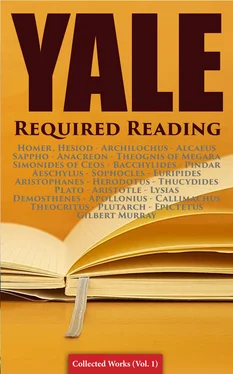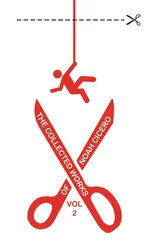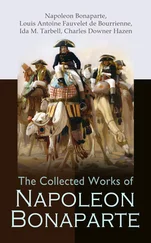The Greeks naturally identified Demeter and Dionysus with Isis and Osiris. There were analogies in the figures and the legends, and that was enough. So, had the Greeks visited America, they would have recognised Demeter in the Pawnee Earth Mother, and Persephone or Eubouleus in Chibiabos. To account for the similarities they would probably have invented a fable of Pawnee visitors to Greece, or of Greek missionaries among the Pawnees. So they were apt to form a theory of an Egyptian origin of Dionysus and Demeter.
M. Foucart, however, argues that agriculture, corn-growing at least, came into Greece at one stride, barley and wheat not being indigenous in a wild state. The Greeks, however, may have brought grain in their original national migration (the Greek words for grain and ploughing are common to other families of Aryan speech) or obtained it from Phœnician settlements. Demeter, however, in M. Foucart’s theory, would be the Goddess of the foreigners who carried the grain first to Hellas. Now both the Homeric epics and the Egyptian monuments show us Egypt and Greece in contact in the Greek prehistoric period. But it does not exactly follow that the prehistoric Greeks would adopt Egyptian gods; or that the Thesmophoria, an Athenian harvest-rite of Demeter, was founded by colonists from Egypt, answering to the daughters of Danaus. 84Egyptians certainly did not introduce the similar rite among the Khonds, or the Incas. The rites could grow up without importation, as the result of the similarities of primitive fancy everywhere. If Isis is Lady of the Grain in Egypt, so is Mama in Peru, and Demeter need no more have been imported from Egypt than Mama. If Osiris taught the arts of life and the laws of society in Egypt, so did Daramulun in Australia, and Yehl in British Columbia. All the gods and culture heroes everywhere play this rôle —in regions where importation of the idea from Egypt is utterly out of the question. Even in minute details, legends recur everywhere; the phallus of a mutilated Australian being of the fabulous “Alcheringa time,” is hunted for by his wives; exactly as Isis wanders in search of the phallus of the mutilated Osiris. 85aIs anything in the Demeter legend so like the Isis legend as this Australian coincidence? Yet the Arunta did not borrow it from Egypt. 85bThe mere fact, again, that there were Mysteries both in Egypt and Greece proves nothing. There is a river in Monmouth, and a river in Macedon; there are Mysteries in almost all religions.
Again, it is argued, the Gods of the Mysteries in Egypt and Greece had secret names, only revealed to the initiated. So, too, in Australia, women (never initiated) and boys before initiation, know Daramulun only as Papang (Father). 85cThe uninitiated among the Kurnai do not know the sacred name, Mungan-ngaur. 85dThe Australian did not borrow this secrecy from Egypt. Everywhere a mystery is kept up about proper names. M. Foucart seems to think that what is practically universal, a taboo on names, can only have reached Greece by transplantation from Egypt. 86aTo the anthropologist it seems that scholars, in ignoring the universal ideas of the lower races, run the risk of venturing on theories at once superficial and untenable.
M. Foucart has another argument, which does not seem more convincing, though it probably lights up the humorous or indecent side of the Eleusinia. Isocrates speaks of “good offices” rendered to Demeter by “our ancestors,” which “can only be told to the initiate.” 86bNow these cannot be the kindly deeds reported in the Hymn, for these were publicly proclaimed. What, then, were the secret good offices? In one version of the legend the hosts of Demeter were not Celeus and Metaneira, but Dusaules and Baubo. The part of Baubo was to relieve the gloom of the Goddess, not by the harmless pleasantries of Iambê, in the Hymn, but by obscene gestures. The Christian Fathers, Clemens of Alexandria at least, make this a part of their attack on the Mysteries; but it may be said that they were prejudiced or misinformed. 87aBut, says M. Foucart, an inscription has been found in Paros, wherein there is a dedication to Hera, Demeter Thesmophoros, Korê, and Babo , or Baubo. Again, two authors of the fourth century, Palæphatus and Asclepiades, cite the Dusaules and Baubo legend. 87b
Now the indecent gesture of Baubo was part of the comic or obscene folk-lore of contempt in Egypt, and so M. Foucart thinks that it was borrowed from Egypt with the Demeter legend. 87cCan Isocrates have referred to this good office?—the amusing of Demeter by an obscene gesture? If he did, such gestures as Baubo’s are as widely diffused as any other piece of folk-lore. In the centre of the Australian desert Mr. Carnegie saw a native make a derisive gesture which he thought had only been known to English schoolboys. 88aAgain, indecent pantomimic dances, said to be intended to act as “object lessons” in things not to be done, are common in Australian Mysteries. Further, we do not know Baubo, or a counterpart of her, in the ritual of Isis, and the clay figurines of such a figure, in Egypt, are of the Greek, the Ptolemaic period. Thus the evidence comes to this: an indecent gesture of contempt, known in Egypt, is, at Eleusis, attributed to Baubo. This does not prove that Baubo was originally Egyptian. 88bCertain traditions make Demeter the mistress of Celeus. 88cTraces of a “mystic marriage,” which also occur, are not necessarily Egyptian: the idea and rite are common.
There remains the question of the sacred objects displayed (possibly statues, probably very ancient “medicine” things, as among the Pawnees) and sacred words spoken. These are said by many authors to confirm the initiate in their security of hope as to a future life. Now similar instruction, as to the details of the soul’s voyage, the dangers to avoid, the precautions to be taken, notoriously occur in the Egyptian “Book of the Dead.” But very similar fancies are reported from the Ojibbeways (Kohl), the Polynesians and Maoris (Taylor, Turner, Gill, Thomson), the early peoples of Virginia, 89athe modern Arapaho and Sioux of the Ghost Dance rite, the Aztecs, and so forth. In all countries these details are said to have been revealed by men or women who died, but did not (like Persephone) taste the food of the dead; and so were enabled to return to earth. The initiate, at Eleusis, were guided along a theatrically arranged pathway of the dead, into a theatrical Elysium. 89bNow as such ideas as these occur among races utterly removed from contact with Egypt, as they are part of the European folk-lore of the visits of mortals to fairyland (in which it is fatal to taste fairy food), I do not see that Eleusis need have borrowed such common elements of early belief from the Egyptians in the seventh century B.C. 90One might as well attribute to Egypt the Finnish legend of the descent of Wainamoinen into Tuonela; or the experience of the aunt of Montezuma just before the arrival of Cortès; or the expedition to fairyland of Thomas the Rhymer. It is not pretended by M. Foucart that the details of the “Book of the Dead” were copied in Greek ritual; and the general idea of a river to cross, of dangerous monsters to avoid, of perils to encounter, of precautions to be taken by the wandering soul, is nearly universal, where it must be unborrowed from Egypt, in Polynesian and Red Indian belief. As at Eleusis, in these remote tribes formulas of a preservative character are inculcated.
The “Book of the Dead” was a guidebook of the itinerary of Egyptian souls. Very probably similar instruction was given to the initiate at Eleusis. But the Fijians also have a regular theory of what is to be done and avoided on “The Path of the Shades.” The shade is ferried by Ceba (Charon) over Wainiyalo (Lethe); he reaches the mystic pandanus tree (here occurs a rite); he meets, and dodges, Drodroyalo and the two devouring Goddesses; he comes to a spring, and drinks, and forgets sorrow at Wai-na-dula, the “Water of Solace.” After half-a-dozen other probations and terrors, he reaches the Gods, “the dancing-ground and the white quicksand; and then the young Gods dance before them and sing. . . . ” 91a
Читать дальше












